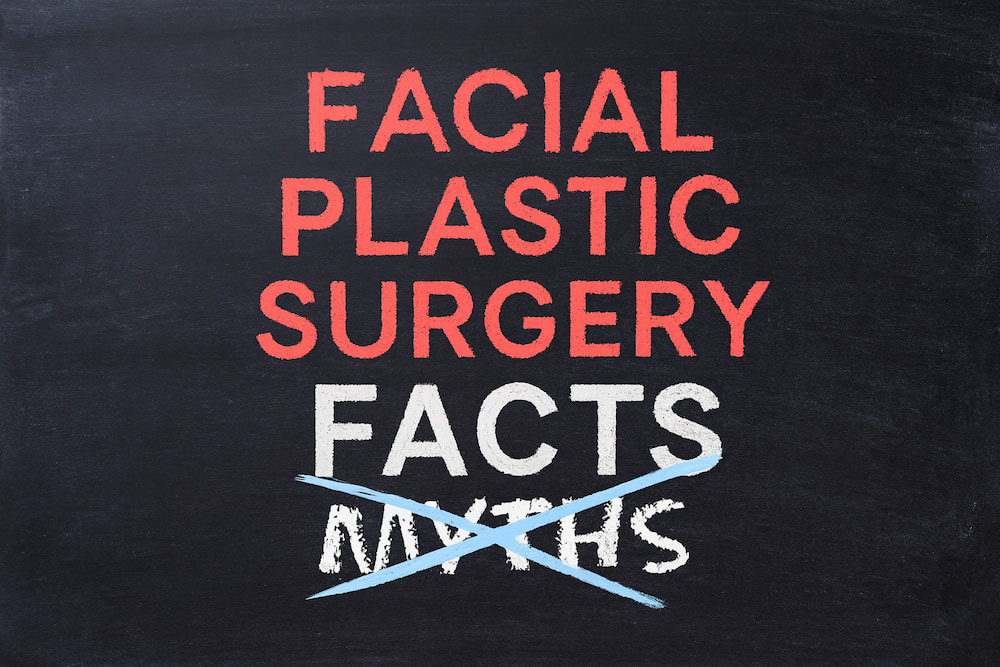










Facial plastic surgery has become more normalized than ever, but the myths surrounding it haven’t caught up. People still whisper about botched results, assume it’s only for celebrities, or believe fillers can replace a facelift. And even with better access to information, some of the most outdated ideas persist, often shared confidently by those who’ve never stepped foot in a surgeon’s office.
This piece isn’t about glamorizing facial surgery or shaming anyone who’s opted out. It’s about clearing the air. Because if you’re going to make a decision that involves your face, you deserve more than social media spin or secondhand hearsay.
Let’s break down the biggest myths and what actually holds up in 2025.
What Hollywood, social media, and outdated forums keep getting wrong.
The stereotype of the wealthy socialite getting surgery on a whim doesn’t reflect reality. Today, facial procedures are more common across a wide range of ages, incomes, and backgrounds. Many patients are working professionals, parents, teachers, or business owners who want to look more like how they feel, not someone else entirely. Financing options, in-office procedures, and evolving techniques with more natural results have made facial plastic surgery more accessible and less stigmatized.
That pulled, windswept look? That’s not modern surgery. Skilled Tampa facial plastic surgeons aim for balance, subtlety, and natural contour, not frozen foreheads or pinched expressions. When done well, a facelift or blepharoplasty should restore harmony to your face without erasing your identity. The best compliment is that you’ll look rested, not altered.
Facelifts used to be seen as a last resort, something people did in their 60s or 70s. But now, many patients start in their 40s or 50s. Why? Because earlier intervention often leads to better, longer-lasting results. Techniques like the deep plane facelift address underlying structures, not just skin, creating lift without tension. A mini facelift can correct jowling or laxity in the lower face without a full surgical commitment.
Fillers have their place. They can restore lost volume, soften wrinkles, and improve contour—temporarily. They can’t fix sagging skin, jowls, or deep structural changes. In some cases, overuse of fillers can even distort facial proportions. Surgery addresses what fillers can’t: gravity and structural descent.
Men are increasingly seeking facial procedures, from rhinoplasty to neck lifts. According to recent data, male patients now account for a growing percentage of facial plastic surgeries. What they often want: a more defined jawline, less heaviness around the eyes, and results that look masculine but natural. The stigma is fading, slowly but surely.
Recovery isn’t one-size-fits-all. Many facial procedures now involve minimal downtime. For example, a mini facelift may allow return to work within seven to ten days. Bruising, swelling, and tenderness are expected, but pain is typically manageable. Planning your surgery around personal and professional commitments makes recovery far more doable than most assume.
This myth might be the most dangerous of all. A surgeon’s board certification, training background, and aesthetic approach make a massive difference in outcomes. Facial surgery requires both medical skill and artistic precision, so choosing someone who specializes in facial procedures, not just general cosmetic surgery, can mean the difference between a subtle refresh and a regretful revision.
Facial plastic surgery in 2025 isn’t what it was even ten years ago. Techniques have evolved not just for better results, but for safer, more precise procedures tailored to the individual. Many of the fears people have are based on outdated methods (tight skin pulls, cookie-cutter results, long recoveries) that no longer reflect what’s possible.
Here’s what’s changed:
These tools aren’t bells and whistles. They’re how elite facial plastic surgeons deliver consistent results while minimizing trauma to facial tissues. In skilled hands, modern surgery respects facial identity while restoring youthful balance. That’s a major departure from the "overdone" stereotype still lingering in people’s minds.
Facial plastic surgery myths didn’t appear out of nowhere. They're the product of decades of cultural noise, mixed messages, and a few high-profile cautionary tales. Even as techniques evolve and results become more refined, many of the old misconceptions continue to circulate. Here's why:
Celebrity tabloid culture thrives on extremes. When someone reemerges looking unrecognizable—for better or worse—that story grabs headlines. But those outcomes often involve a combination of factors: multiple surgeries, bad technique, or even just strange lighting. What doesn't make the news? The thousands of patients whose results are natural, subtle, and successful.
Outdated media portrayals still shape public perception. Think back to 90s sitcoms and early-2000s reality shows: the plastic surgery patient was always the punchline, the person who looked "too young" or had clearly done "too much." These narratives were rarely grounded in real outcomes or patient motivations, but they stuck.
Influencer misinformation adds another layer. Social media is saturated with advice and commentary from people who aren't medically trained. Whether it's suggesting certain procedures as "non-surgical facelifts" or downplaying risks, a lot of viral content prioritizes aesthetics over accuracy. Even well-meaning creators can unintentionally spread confusion.
General fear of the unknown still lingers. Surgery is a big deal, especially when it involves your face. Fear can easily morph into rumor when people don’t have a clear understanding of what modern surgery actually entails. And when personal stories circulate without context—like a friend of a friend who had a bad outcome, those become part of the mythos too.
Essentially, myths thrive in gaps: gaps in education, gaps in transparency, and gaps in representation. That’s why it’s important to ask real questions, look at actual outcomes, and understand what modern facial surgery really looks like, not just what pop culture says it is.
Good surgeons will help you pinpoint whether your aesthetic concerns stem from volume loss, skin laxity, or structural descent. Sometimes it's one. Often, it's all three.
Age, bone structure, lifestyle, and genetics all play a role in what surgery can (and can’t) do. Unrealistic expectations are often a result of not asking enough honest questions up front.
Sometimes it’s not about doing more. It’s about doing smarter. A lower blepharoplasty might pair well with fat transfer; a neck lift might require a chin implant for better definition. One-size-fits-all rarely applies.
The best surgeons won’t pressure you into surgery. They’ll give you the full picture, including what to expect if you choose not to intervene at all.
Facial plastic surgery is not a miracle, but it’s also not the boogeyman. The real danger lies in acting on misinformation. When done for the right reasons, by the right hands, with the right expectations, it can be one of the most confidence-affirming decisions a person makes.
The goal isn’t perfection. It’s authenticity—feeling like the outside finally reflects how you feel inside.
If you’re considering a facial procedure, ask questions. Check facts. And don’t let myths make decisions for you.
Dr. Farrior is so much more than a doctor – he’s an artist. Dr. Farrior has the right medical knowledge and the artistic vision needed to create harmony among his patients’ facial features. He truly listens to his patients and is always open to their concerns.